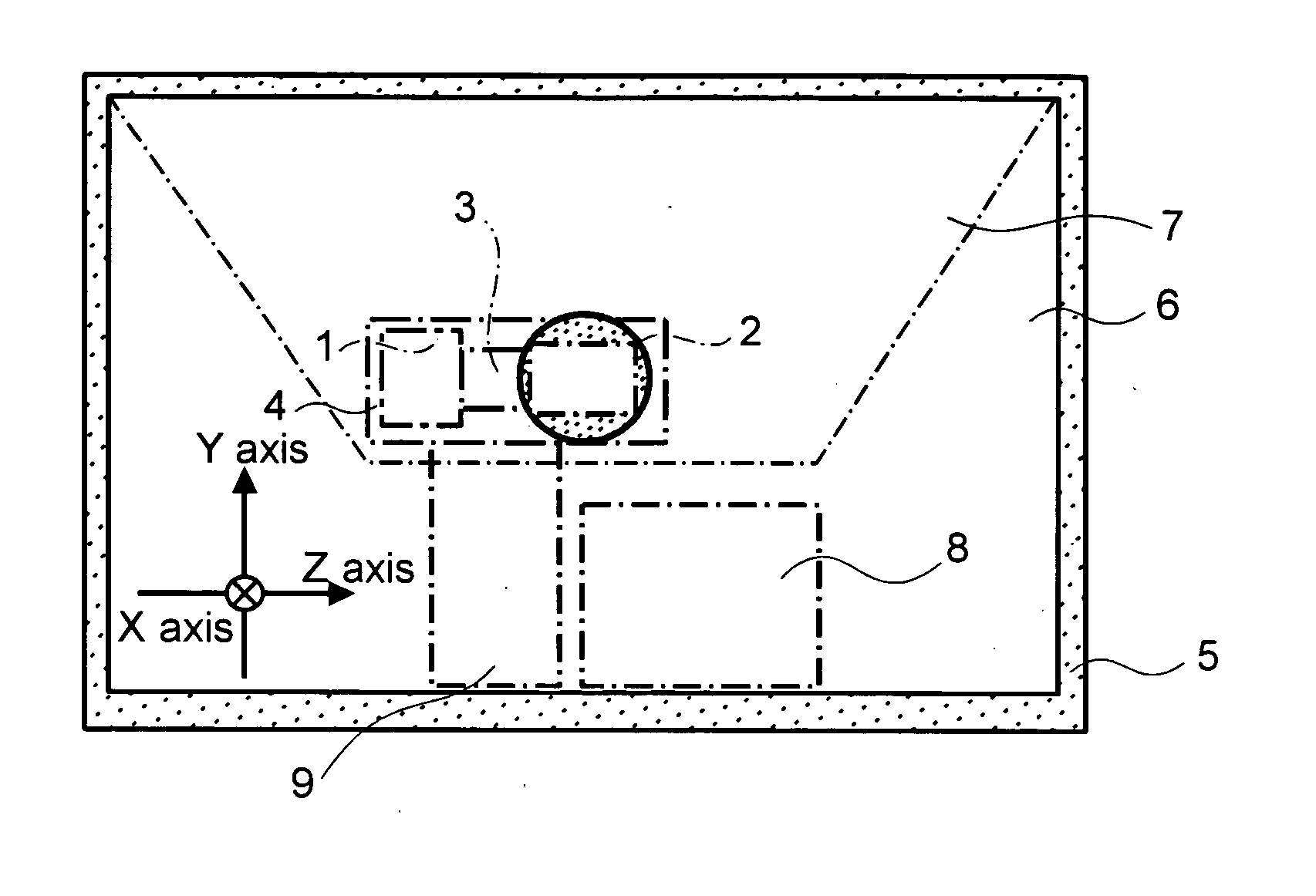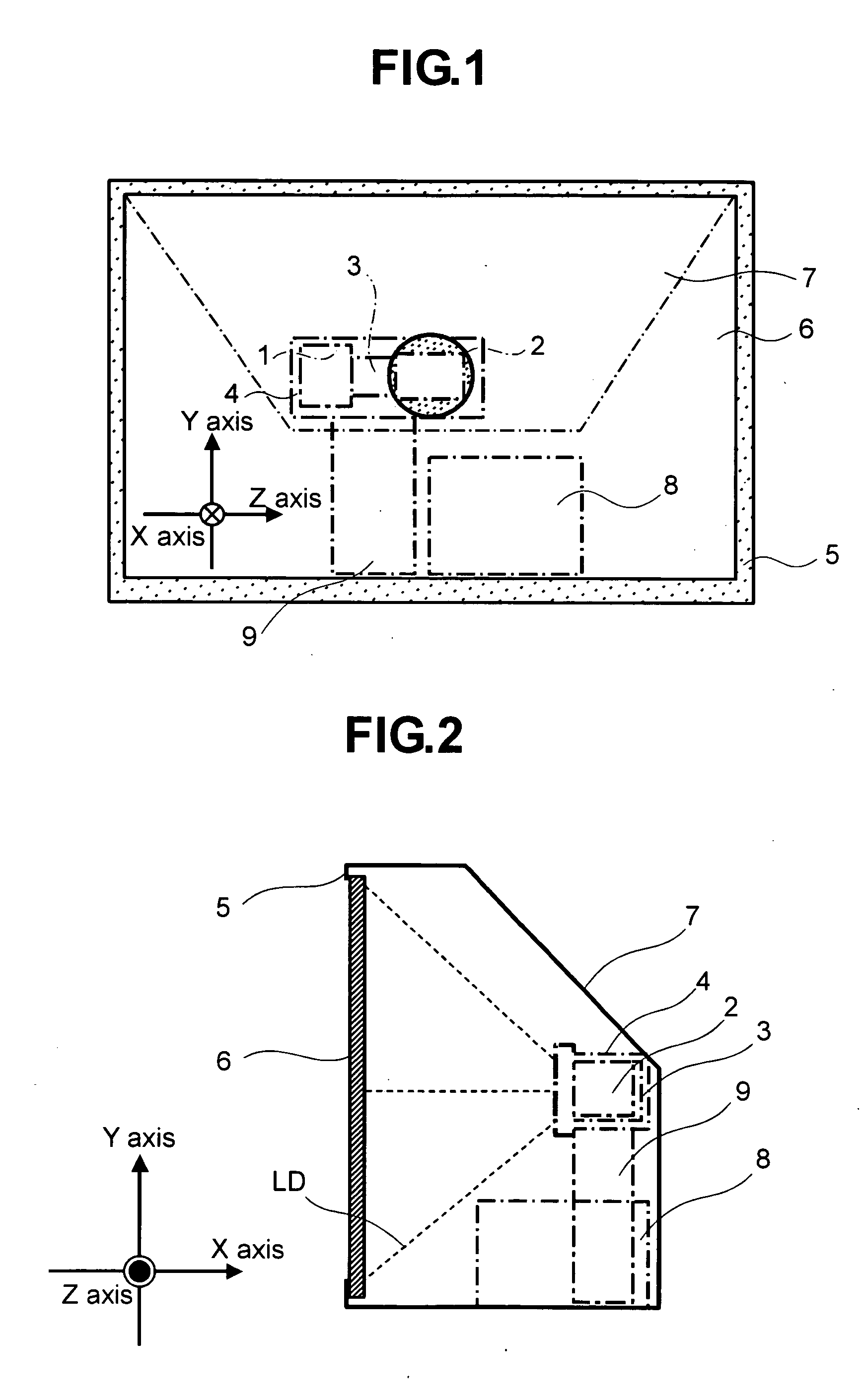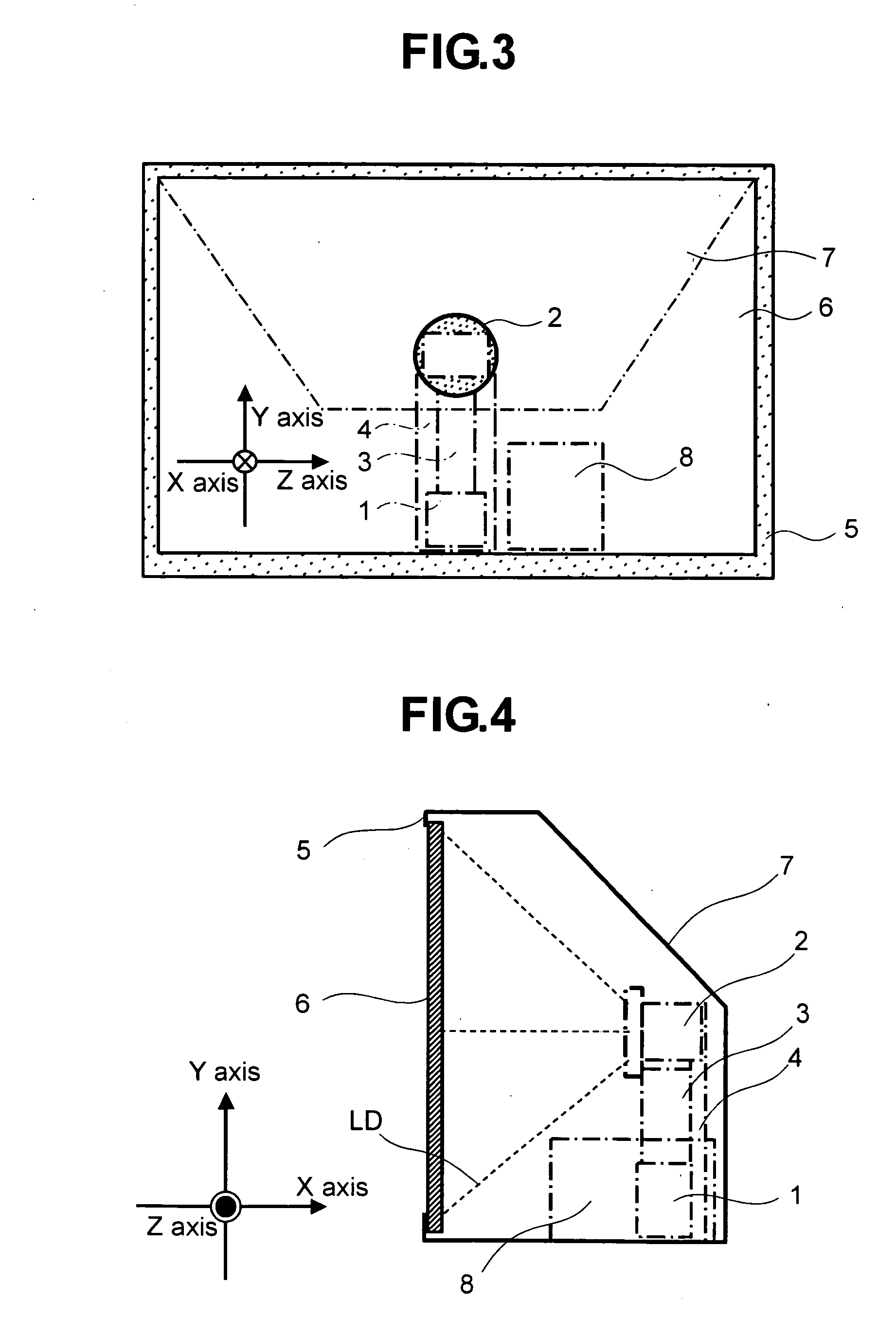Rear projection image display apparatus
a technology of display apparatus and rear projection, which is applied in the field of rear projection image display apparatus, can solve the problems of difficulty in its manufacture, difficulty in ensuring the positional accuracy of each lens, and the magnification of the disclosed afocal converter is too low to permit a wide view angle, etc., and achieves the effect of increasing the compactness of the set and compact apparatus
- Summary
- Abstract
- Description
- Claims
- Application Information
AI Technical Summary
Benefits of technology
Problems solved by technology
Method used
Image
Examples
second embodiment
[0068]FIG. 3 is a front view showing a projection optical unit according to the present invention. In the figure, numeral 1 represents an illumination optical system; 5 a housing; 6 a screen; and 7 a back cover. Numeral 4 represents a projection optical unit whereby light from a white light source is cast on an image display device (not shown) by the illumination optical system 1 and an image formed according to an image signal at the image display device is enlarged and projected. Numeral 3 represents a first lens barrel which incorporates a first lens group (not shown, explained later) with positive refractive power of the projection optical unit; 2 a second lens barrel which incorporates a second lens group (not shown, explained later) with positive refractive power of the projection optical unit. Here, a flare stop (marked with hatching) may be provided in an area of the lens nearest to the screen among the lenses built in the second lens barrel other than its effective area (ar...
first embodiment
[0074] Details of the projection optical unit in the projection image display apparatus according to the present invention will be described referring to FIG. 5. For convenience of illustration, components with the same functions as those in FIG. 1 are designated by the same reference numerals.
[0075] In the figure, numeral 21 represents a white lamp as a light source; and 4 a transmission liquid crystal panel 51 (52, 53).
[0076] Light from the white lamp 21 is polarized / color-separated by the illumination optical system (not shown) and cast on the transmission liquid crystal panel 51 (52, 53). On the transmission liquid crystal panel 51 (52, 53), the optical intensity of each incoming color light is modulated according to an image signal to make an optical image. These different color optical images are combined by a cross prism 27 to make up a finished color image which is then enlarged by the projection optical unit 210.
[0077] The projection optical unit 210 includes a first lens...
PUM
| Property | Measurement | Unit |
|---|---|---|
| view angle | aaaaa | aaaaa |
| size | aaaaa | aaaaa |
| size | aaaaa | aaaaa |
Abstract
Description
Claims
Application Information
 Login to View More
Login to View More - R&D
- Intellectual Property
- Life Sciences
- Materials
- Tech Scout
- Unparalleled Data Quality
- Higher Quality Content
- 60% Fewer Hallucinations
Browse by: Latest US Patents, China's latest patents, Technical Efficacy Thesaurus, Application Domain, Technology Topic, Popular Technical Reports.
© 2025 PatSnap. All rights reserved.Legal|Privacy policy|Modern Slavery Act Transparency Statement|Sitemap|About US| Contact US: help@patsnap.com



